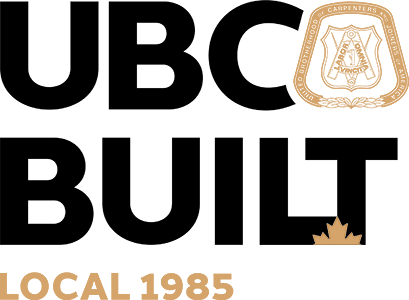April 2025
Training Calendar – Saskatoon
Training Calendar – Regina
To register for training, or for any inquiries, please contact:
Nancy Orban at norban@ubcja.ca or 306-934-8224
To register for training, or for any inquiries, please contact:
Kim Struthers at kstruthers@ubcja.ca or 306-585-0900
Courses Offered
Aerial Lift / MEWP
There is a practical portion of the course where the students have time operating a scissor lift and a boom lift. Students are required to wear fall protection when using the equipment so must have a fall protection course as a prerequisite.
Prerequisite: Fall Protection
Content includes:
Regulations
Aerial lift safety
Scissor lifts
Self propelled boom-supported platforms
Manually propelled aerial work platforms
Construction Fall Protection
Topics include (with corresponding WSH, OH&S and Ontario Regs and CSA standards, where applicable):
Fall Hazards – identification
Calculating Fall distance
Fall arresting devices
Anchors and anchorage points
Full body harness
Lifelines – vertical and horizontal
Rope grabs
Safety hooks
Shock Absorbers
Safety nets
Bottoming out
Impact forces
Inspection of fall arrest equipment
Swing fall hazards
Aerial devices and mobile equipment
Suspension Trauma
Protection from falling objects
Manufacturer designed usage of many fall protection items.
Fall protection plan
Control zones
Travel restraint
Confined Space
Content includes:
Regulations
Characteristics of confined spaces
Atmospheric conditions
Air monitoring
Ventilation
Lockout
Personal protection and communications equipment
Rescue and retrieval
Powered Industrial Truck Operator
Content includes:
Definition of a power industrial lift truck – forklifts, telehandlers
Different types of lift trucks
Attachments
Hand Signals
Stability of a forklift
Stability of a telehandler
Center of gravity for a load
Load charts
Fork lift parts
Telehandler parts
Operators manuals
Equipment inspections
General maintenance
Operator guide lines
Safety considerations (spotters)
Equipment Inspection
Practical Test
Skid Steer Operator
Content includes:
Definition of a power industrial lift truck – forklifts, telehandlers
Different types of lift trucks
Attachments
Hand Signals
Stability of a forklift
Stability of a telehandler
Center of gravity for a load
Load charts
Fork lift parts
Telehandler parts
Operators manuals
Equipment inspections
General maintenance
Operator guide lines
Safety considerations (spotters)
Equipment Inspection
Practical Test
Shop Steward
Materials that are covered in the course include:
- FAS benefit packages
- Collective Agreement
- Copy of the CODC policy
- UBC Constitution
- Steward’s incident report
- Harassment policy
- Use of a ledger to record their daily interactions.
Achieving a positive and productive relationship between employee, employer, and union representative is the key to a successful job site.
Scaffold Inspection
This is an 8-hour course that includes CSA Z797-09, Saskatchewan OH&S regulations, videos and manufacturers specifications. Using the manufacturers specifications the students calculate load ratings for different scenarios using different types and sizes of scaffolds. Students get to inspect some different scaffolds set up so they can apply the information that they were given. It is recommended that the scaffolders that inspect scaffold should be 3rd year apprentice scaffolder or higher for they have spent time using the different scaffold systems in the field and they have a better understanding of how the scaffold systems work in different scenarios.
Other Courses Offered
Please see “Industry Partners” tab for more information.
